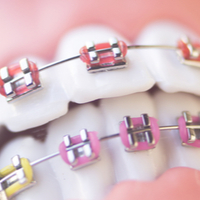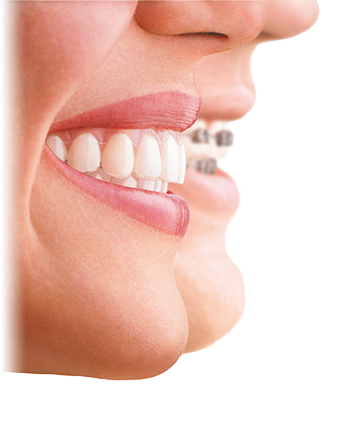
All too often, overcrowding or a slight crookedness to your teeth can make you feel self-conscious about your smile.
Luckily, there is an easy fix. No matter your age – yes you don’t have to be a teenager to fix your teeth – straighter teeth can make all the difference to your confidence, appearance and self-belief.
What is teeth straightening?
Straightening your teeth can do more than fix your smile. It can also improve your ability to eat; lower your risk of developing jaw/joint problems caused by overbite or overcrowded teeth (otherwise known as malocclusion), and can put a halt to tooth decay and gum disease.
In other words, by placing your trust in orthodontic treatments, you can reduce gaps and spaces between your teeth; eliminate overbite and essentially improve the position of your teeth so they look and function better.
And the treatments themselves aren’t too intensive.
The teeth straightening process
Step One – Examination:
Before you even sign up for any form of treatment, your teeth will first need a full assessment, including x-rays and photographs.
This will allow your orthodontist to examine your teeth and decide on the best course of action. For instance, while most people only need a brace, your x-rays may reveal that you need surgery of the jaw before one can be fitted. Similarly it might be discovered that you need extractions (teeth taken out) to create more room in your mouth.
Step Two – Choosing a Treatment
There’s a whole host of straighteners, aligners and appliances to choose from – each with its own unique set of pros and cons. If you’re wondering which straightening treatment might work best for you, it’s always better to consult a professional.
Here are a few of the options on offer. Braces – fixed or removable, braces are designed to slowly reposition your teeth by gently applying pressure and are usually worn for between six months to two years. The length of time you’ll need to wear them will be dependent on your needs; however every two to ten weeks you’ll be expected to visit your orthodontist who will check your brace and make adjustments that will encourage the teeth to straighten.
Like we already mentioned, no brace is the same, so dependent on your requirements you could end up with a removable one or a brace that is fixed to the front or the back of your teeth:
– Removable braces: comprised of a plastic plate with wire clips and springs attached (to move specific teeth through tipping/tilting); removable braces are usually administered in mild cases of teeth crowding and need to be worn at all times (except when cleaning).
– Aligners: these removable moulds are computer generated; are based on a bite impression of your lower and upper teeth, and are made from clear plastic aligners that needs to be changed every 2 weeks. Their goal is to move your teeth into the correct position (thus explaining why you need to change them every 2 weeks) and are commonly used in mild cases and on adults. NOTE: compared to braces these have the bonus being easy to hide and clean.
– Fixed braces: the king of all braces, this highly visible brace works by being directly attached to your teeth (through small brackets, cement and wires), where it is then adjusted by your orthodontist to influence the movement of your teeth.
-Headgear: we won’t lie, headgear is not the most appealing option; however it only needs to be worn during the evening or at night, enabling it to correct the development of your teeth and jaws, as well as straighten your teeth.
–Veneers (caps): usually used in teeth whitening or to mask chipped teeth; veneers (a thin layer of porcelain/composite material) can also help to correct small gaps in your teeth.
–Dental Contouring: this technique is commonly used to reshape your natural, pre-existing teeth to make them appear straighter while repairing cracks and chips.
As you can see – your options are limitless!
So if you are unhappy with your smile and dream of straighter teeth, then why not pop down to your dentist today and discuss treatments? Whether you are 10, 25 or 40… it is never too late to achieve your dream smile.







